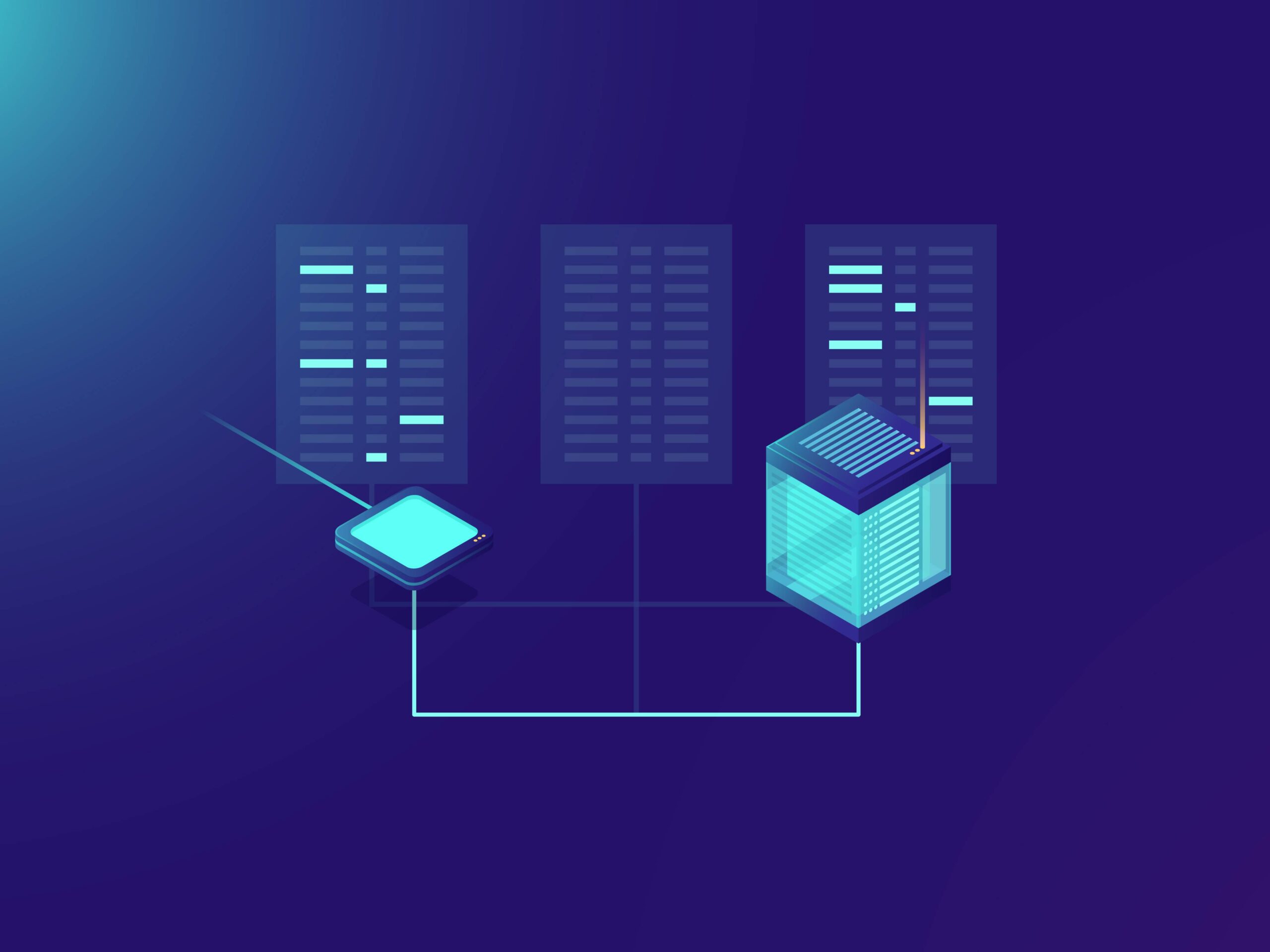The most important thing to do in this fast-changing era of software development is choosing the appropriate architectural style. Therefore, the quality and structure of the underlying software significantly affect the performance, scalability, and maintainability of businesses and applications during high growth.
The two most common architectural styles developers usually choose are monolithic vs. microservice architectures. The software design approach based on the monolithic architecture was developed several years ago, making many applications easy and efficient.
With apps gradually becoming more extensive and more complex, the deficiencies of monolithic architectures have increased. For this reason, microservices have been more frequently adopted, leading to the disintegration of an application into smaller and less complex components.
Understanding microservices vs. Monolithic architectural designs is critical to choosing the right one for your tasks.
What is Monolithic Architecture?
In monolithic architecture, all the application layers, from the user interface and business logic to the data access layers, are compiled into one executable or deployable package to form a single coherent unit.
A monolithic system is built and deployed as one piece; hence, any changes made in any part of it, such as new features or bug fixes, require a complete application rebuild and redeployment.
The strong connection between parts can simplify software creation at the beginning because there is only one code and one deployment channel. This may be good for small systems, but it can hinder scaling up efficiently, maintaining, and upgrading a system.
Changes to one part of the application may have side effects in other parts, and generally, scaling an application means replicating this monolith many times, which is resource-inefficient. Despite these challenges, monolithic architecture still serves well for relatively small applications or ones with well-defined, rather stable requirements.
Pros and Cons of Monolithic Architecture
Pros:
Monolithic architecture offers a range of benefits, such as:
- Simplicity: The fact that monolithic architecture is simple is one of its most significant advantages. This results in a simplified development, testing, and deployment process since all the components come together under one umbrella, using a single codebase.
- Performance: With all the components fitting together so cohesively, communication within an application occurs more rapidly.
- Ease of Development: The developers only have to deal with one codebase, which makes it easier to handle and understand.
- Deployment: Deployment is easy because there is only one unit to be deployed.
Cons:
There are a few downsides to the monolithic architecture worth mentioning, such as:
- Scalability: Scaling a monolithic application can be pretty tricky. Since it is monolithic, scaling the whole application means scaling everything when only one part may need additional resources.
- Flexibility: Any change, usually to any single part of an application, requires a variation in the whole codebase of the application, which makes it less flexible.
- Maintenance: As an application grows in size, maintenance becomes more complex and difficult to hold on to.
- Reliability: Any defect in the application can bring down the entire system.
Use Cases
Monolithic architecture is pretty popular when we’re talking about smaller to medium-sized projects. It’s chosen a lot because it’s simple and can perform well, which often makes up for any downsides. For example;
- Small projects or startups: This monolithic architecture is straightforward to build and launch, making it perfect for small teams and startups looking to launch their products quickly.
- Enterprise applications: Many older business software systems were built using a single, unified structure.
- Content management systems: Corporate websites often use platforms like WordPress or Drupal, which bundle everything you need—from managing content behind the scenes to the part visitors interact with to the technical gears turning in the background—into one comprehensive package.
What is Microservice Architecture?
Microservices architecture is a modern way of building software. It involves breaking the application down into smaller, separate pieces that can operate independently.
Every service communicates with all the others using lightweight protocols. For example, HTTP/REST or messaging queues will be used with well-defined APIs.
Microservices encapsulate their business logic, database, and dependencies, making them behave more or less like stand-alone applications. The modular design enables every service to be developed, deployed, and scaled independently, significantly improving flexibility and resilience.
Microservices architecture is appropriate for big, complex applications that require high scalability and flexibility associated with fast development cycles. This model allows the organization to use more resilient and maintainable systems that can change with evolving business expectations.
Pros and Cons of Microservice Architecture
Pros:
The following are the benefits provided by microservice architecture;
- Scalability: Since the different services in a microservices architecture are independent, it becomes easier to scale each separately, which may face increased load.
- Flexibility: Since every service can be written using a different technology, teams can pick whatever tool best fits the task.
- Maintenance: Smaller, focused services are much easier to update and maintain.
- Reliability: Any failure in any single service will not affect the entire system.
Cons:
The following are the few downsides of the microservice architecture;
- Complexity: Microservices involve more complexity regarding interservice communication, data consistency, and deployment.
- Performance: Introducing network communication between services creates latency.
- Testing: Testing an application with too many services can get tricky.
Use Cases
Microservices architecture can serve very well in large and complex applications that require extensive scalability and flexibility. This might include:
- E-commerce platforms: Most e-commerce platforms handle many transactions and often many users. They must also independently scale only specific services like inventory management and payment processing.
- Large-scale web applications: Social media platforms and streaming services can greatly improve by adjusting specific features like user profiles and content delivery separately. This approach allows them to handle varied needs better and improve user experience.
- Cloud-native applications: These applications are built so that whenever they require scaling up or down, cloud technology can be utilized perfectly, resource management can be done effectively, and easy integration with other cloud services can be achieved.
Microservices vs. Monolithic Architecture: Critical Differences
The following are the critical differences between microservice and monolithic architecture;
Size of the Application:
Small-sized applications may use an easy and monolithic method, integrating everything into one cohesive unit. This method is simple for development, testing, and deployment because there’s a single codebase to manage and a single deployment pipeline.
On the other hand, microservices’ scalability and modularity are best suited for large applications with complex requirements and an assortment of functionality. Breaking the application into minor services, each independent but responsible for some specific functionality makes it easier to manage and extend with growth.
Development Team:
The size and composition of your development team are critical in choosing the appropriate architecture. A more minor team will find a monolithic architecture easier to manage, with its single codebase and one unified development process. This could mean quicker development cycles and more accessible communication between team members.
Conversely, larger teams take advantage of microservice architecture, where other teams can work on different services with a microservices approach. Microservices divide labor among a team, focus on a particular application area, and use the best-suited technologies. It also enables services to be developed, tested, and deployed separately without causing disruptions to other services
Scalability Needs:
Microservices could be a better option if your application requires scaling multiple times to meet different loads. Each service can be scaled per its specific performance and load requirements in the microservices architecture.
For example, the product catalog service in an e-commerce platform, which suffers a lot of traffic, might be scaled without impacting other services. It provides fine-grained scalability, efficiently uses resources, and improves performance during high-load conditions.
In contrast, scaling a monolithic application often involves duplication of the entire system, which is resource-intensive and inefficient.
Technology Stack:
One technology stack makes developing monolithic applications more accessible, helping to smooth the development process and reduce complexity. However, this can also be a limitation if different requirements are best suited to various technologies for other application parts.
Microservices allow for a heterogeneous technology stack, letting a team choose the most fitting tools and frameworks for each service. This provides flexibility, such as improved performance and maintainability, and the ability to adopt new technologies. This also makes it possible to experiment more and innovate within different parts of the application.
Which one to choose?
Several factors influence whether to choose a monolithic or microservice architecture, including application requirements, team size, and expected capacity for growth. If the application is simple and small, a monolithic architecture is probable.
However, microservices can be an excellent option if you anticipate major growth and need high levels of flexibility and scalability from your system.
How does VisionX help?
At VisionX, we understand how critical the right software architecture is to your business’s success. That’s why we can provide you with a comprehensive set of services for your journey in software development, whether monolithic or microservices architecture.
Our custom software development is designed to meet your needs, while our mobile app development focuses on user experience delivery.
We also provide cloud consulting to ensure your applications are scalable and reliable. Our IT strategy consulting helps you make the right decisions about your architecture. At the same time, our application management and support services keep your systems running smoothly.
Are you looking to modernize legacy applications? We specialize in enterprise app modernization, and our UX/UI design services will enhance user satisfaction. With VisionX, you can get the right experience and support at any stage of your product’s lifecycle.
Summary
Monolithic architecture is one of the primary software development concepts that provides simplicity and effectiveness for many apps. It allows the development of an application as a unified unit, making the development process more accessible and more manageable during its initial stages.
On the other hand, while this has its advantages regarding deployment efficiency and simplistic testing, it does bring significant disadvantages later in development regarding scalability and flexibility.
Since these applications grow and evolve, the tightly coupled nature of the monolithic architecture makes updating components without affecting the whole system increasingly problematic. This slows down development cycles and makes maintenance complex.
Despite these limitations, monolithic architecture still applies to some projects with stable requirements or smaller teams that benefit from its simplicity.
The capabilities and limitations of microservices vs. monolithic architectures should be known so that effective decisions can be made regarding the design of software systems. This ensures an organization can choose the best approach for specific requirements, goals, and future growth. Businesses can develop robust, scalable applications that align with their strategic objectives by carefully assessing these factors.


